




With marketing budgets being slashed and teams shrinking, retailers need to make their marketing more efficient and more effective.
Thankfully, martech is here to help.
Automation, AI, and data platforms are flying off the shelves. But in a highly competitive space, how do you ensure your particular product is front and centre of retail marketers’ minds?
To answer that, we analysed the buying habits of 170 UK retail marketers using market research data from our GWI platform.
We ask what they want from marketing technology brands and how you can help them get it.
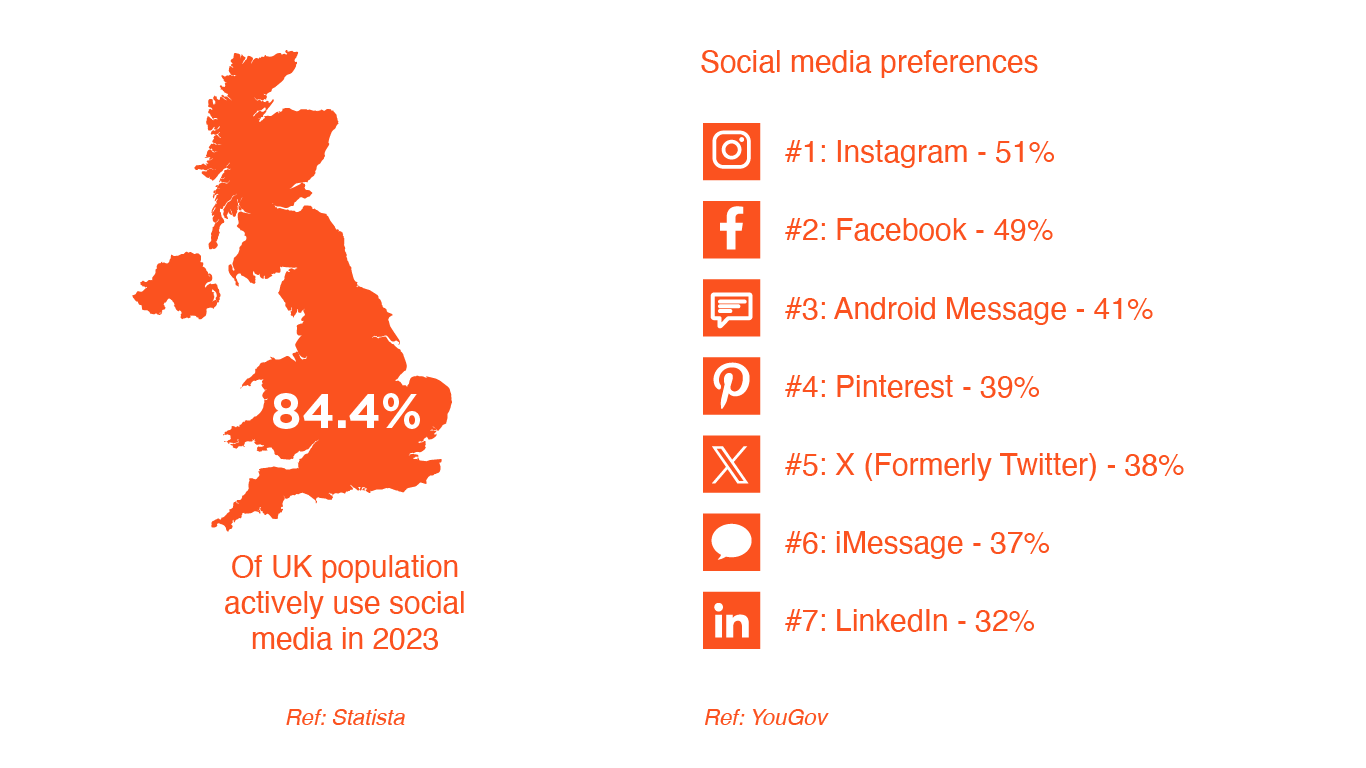
To connect with your online audience effectively, you need to know where they hang out. Surely the answer begins with social media. Right?
With over 80% of the UK population actively using social media, it’s the obvious choice to reach a massive audience. But if you’re targeting retail marketers in the B2B arena, there’s a twist: LinkedIn, typically a B2B favourite, surprisingly ranks 7th.
Intrigued? Let’s dive deeper.
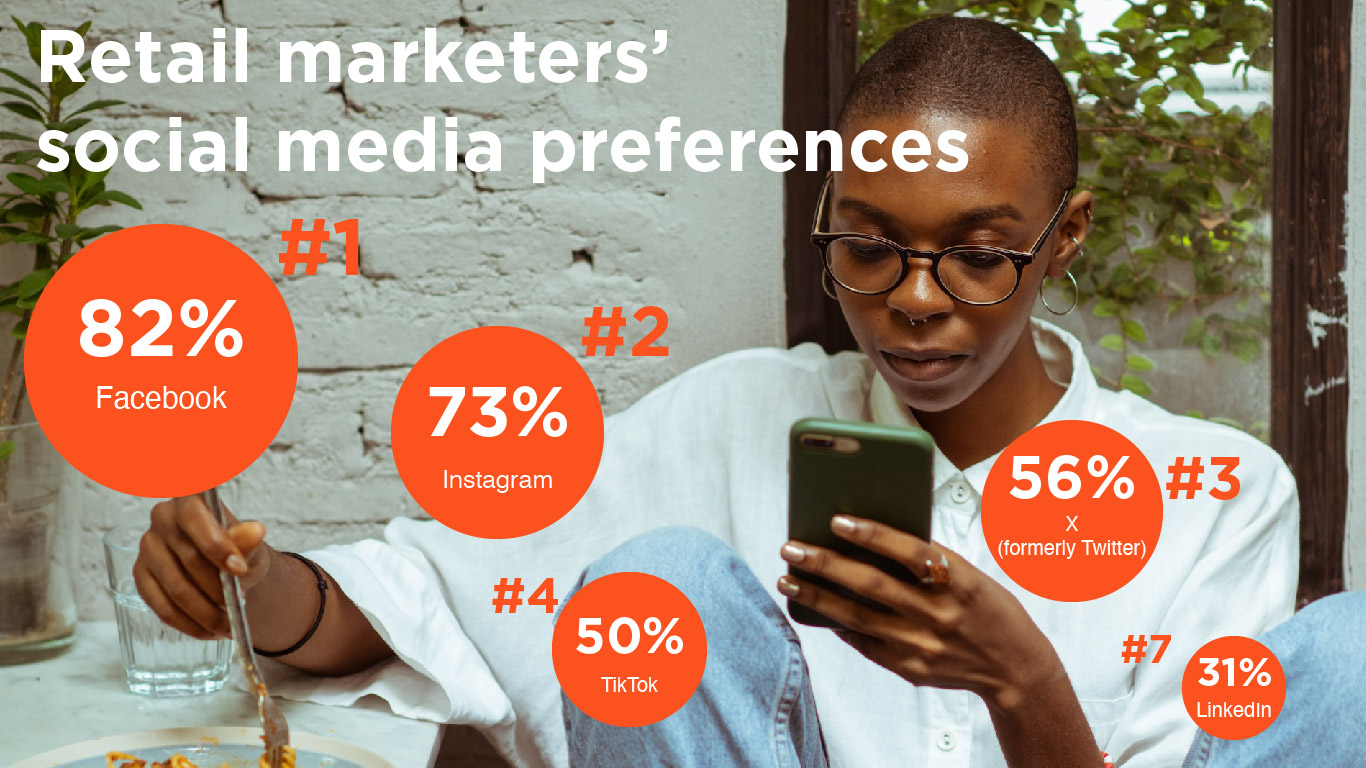
When looking at retail marketers, we tapped into GWI’s audience to unearth their distinct social media preferences. Will this set them apart from the crowd?
In the UK, Facebook, Instagram, Twitter, and TikTok reign supreme among these professionals, while LinkedIn, yet again, takes a modest 7th place with a 31% user base.
With LinkedIn trailing in the rankings, the big question arises — should you divert your efforts to engage retail marketers on other platforms? Perhaps, but the strategy needs a bit of nuance.
Retail marketers wear a different hat when on alternative platforms — they’re likely in relaxation mode, far from work-related thoughts. Here, your messaging must be concise and eye-catching, a departure from the traditional B2B tech content on LinkedIn.
When promoting your B2B content, don’t dismiss popular platforms like Facebook and Instagram. On these channels you need to think like a savvy B2C marketer, aiming for snappy, attention-grabbing posts with crystal-clear CTAs. Or channel your inner packaging designer, crafting visuals that make your product stand out on the virtual shelf.
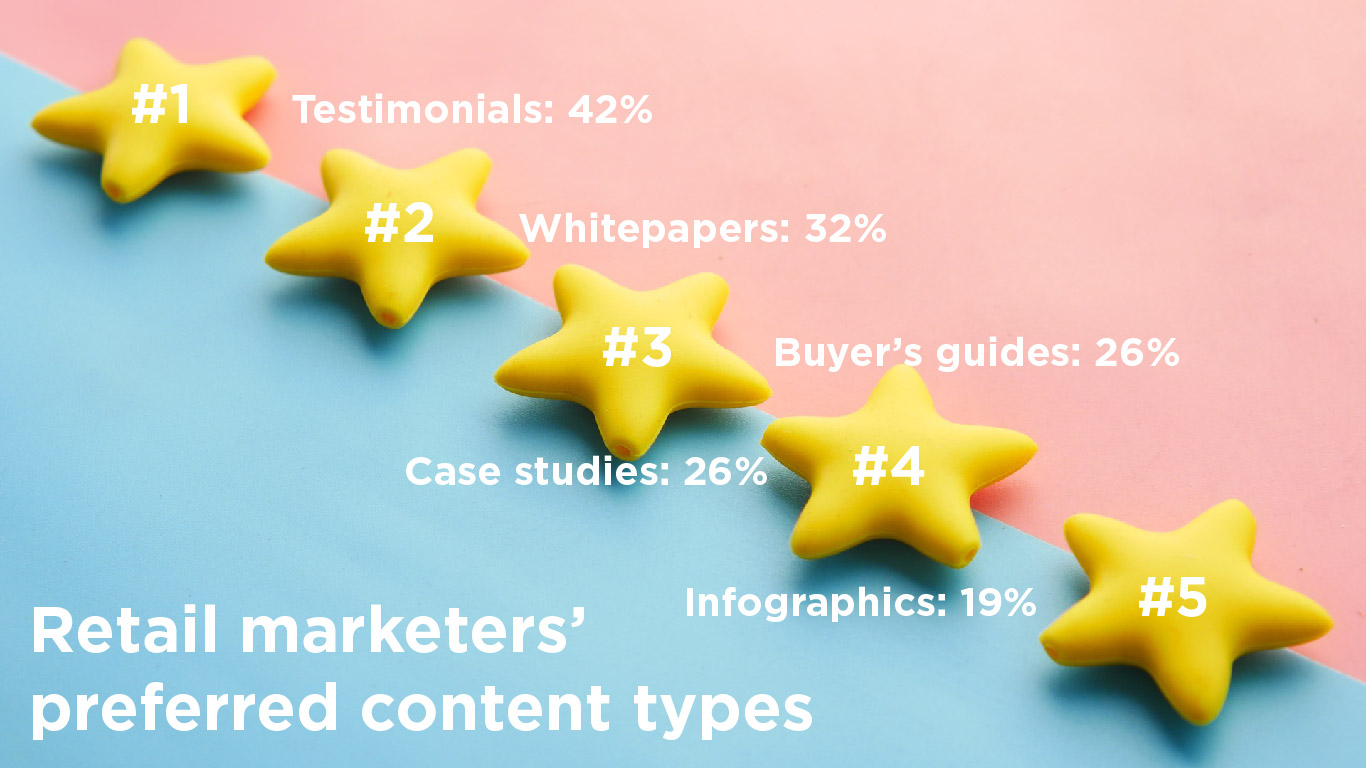
In our retail marketer-focused GWI dataset, 40% express a strong preference for testimonials, while a still solid 25% find case studies useful. The hunger for customer feedback and peer perspectives remains strong. Retail marketers are primed to respond positively to a well-crafted customer advocacy programme.
However, the data tells us something interesting — testimonials outshine case studies by nearly double. Concise, comment-driven content is the name of the game. Too often, businesses invest excessive time in case studies, overlooking the value that easily generated ratings and comments bring to the table.
Start with testimonials as your front-runner, and expand into case studies when the narrative truly demands the spotlight.
But, there’s more to the story. Whitepapers and buyer’s guides claim the 2nd and 3rd spots in popularity. Clearly, there’s an appetite for deep-dive, product-focused material. The challenge lies in capturing and holding readers’ attention.
For LinkedIn, test concise ways to convey the value of delving into a more in-depth read. On other social platforms, consider deploying traffic-driving tactics with a B2C flair to seize attention.
When it comes to actively seeking information about products and services, it’s no surprise that 57% of retail marketers kick things off with search engines. But remember, we’ve seen how much they value testimonials, and customer reviews also score high on their radar.
Social networks might not be the first thought for information gathering, but they remain relevant sources for 25% of retail marketers.
Is there a difference in mindset? Yes. It all boils down to intent.
If someone is actively searching for information, they’re more likely to delve into the details they discover through search, reviews, product/brand websites, and comparisons from the likes of Forrester or Gartner. This is where ebooks, whitepapers and other longform content become relevant.
When reaching out to retail marketers (or any B2B audience), it’s easy to overly rely on email.
In reality, only 18% of retail marketers find out about new brands and products through emails, newsletters, or mailshots.
When inboxes are overflowing with spam (and smart filters are growing ever more aggressive), email alone isn’t enough to get cut through. It needs to be part of a wider integrated campaign.
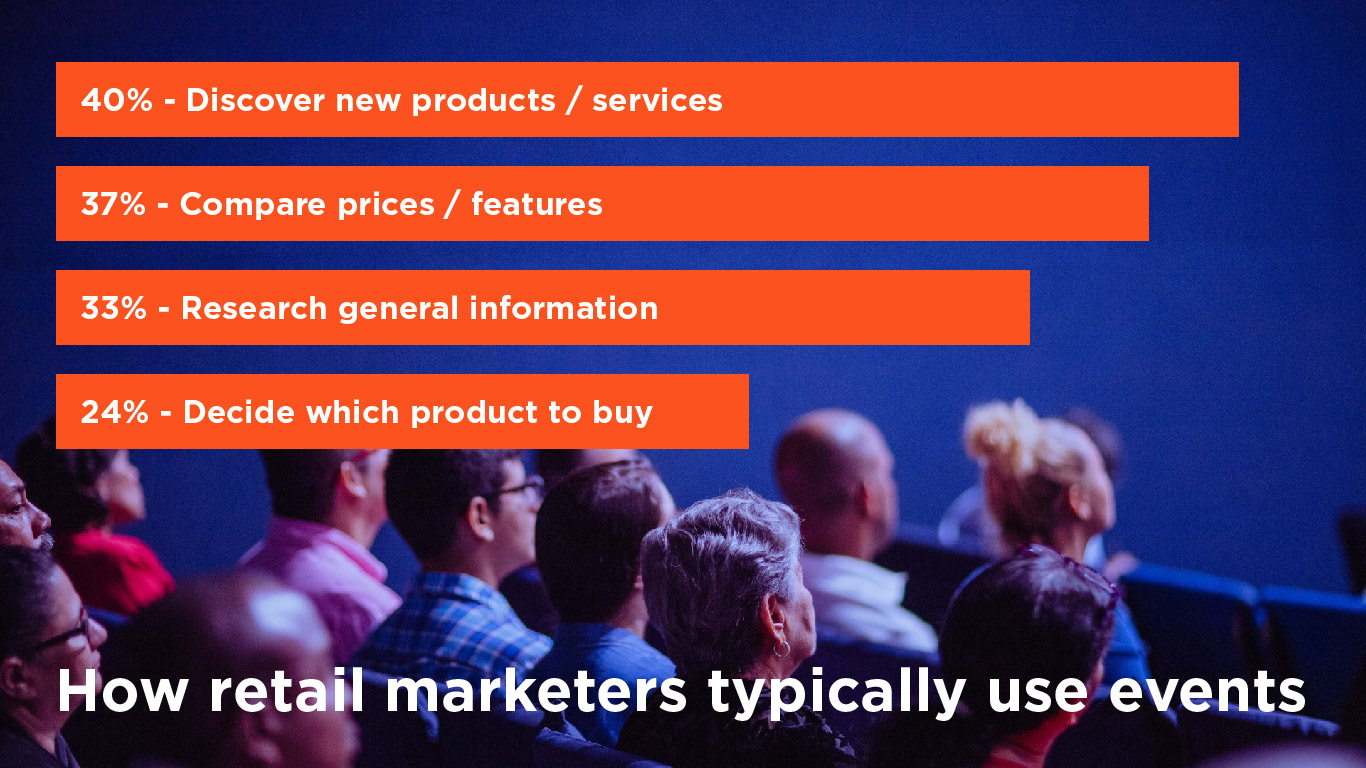
Retail marketers are almost twice as likely to use conferences, trade shows, or events to discover new products or services than they are to make an actual purchase.
This means that the type of content and displays you should focus on creating for such events needs to be top of the funnel discovery content. This will resonate with your audience more and align with their expectations from the event.
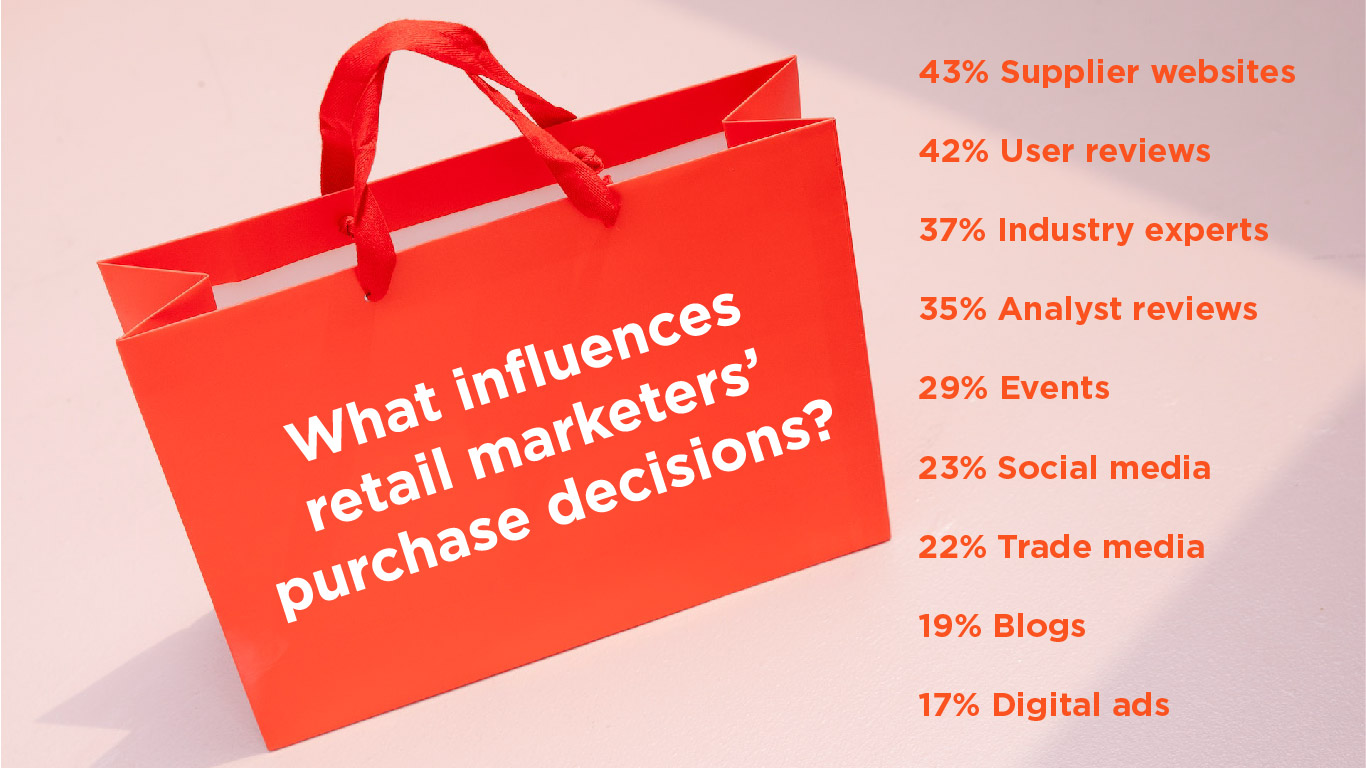
When deciding which tech to buy and which suppliers to use, the first port of call is your website. Who’d have thought?
After that, the four most popular sources are based on reviews — whether these are user reviews, expert recommendations within their network, recommendations from industry analysts, and recommendations from colleagues or friends. This reinforces the importance of customer advocacy.
Success hinges on innovative and bold communication strategies. Harness the power of influencers, analysts, experts, social media, and the press to elevate your retail technology brand. Think bigger, think bolder, and remember, reputation is king in the retail world.
To initiate the download of this awesome content, please just tell us a little about yourself.
We want to make sure we are delivering the right information to the right people. In return, we promise never to:
For more information about how we handle your data and protect your information, please visit our Privacy Policy